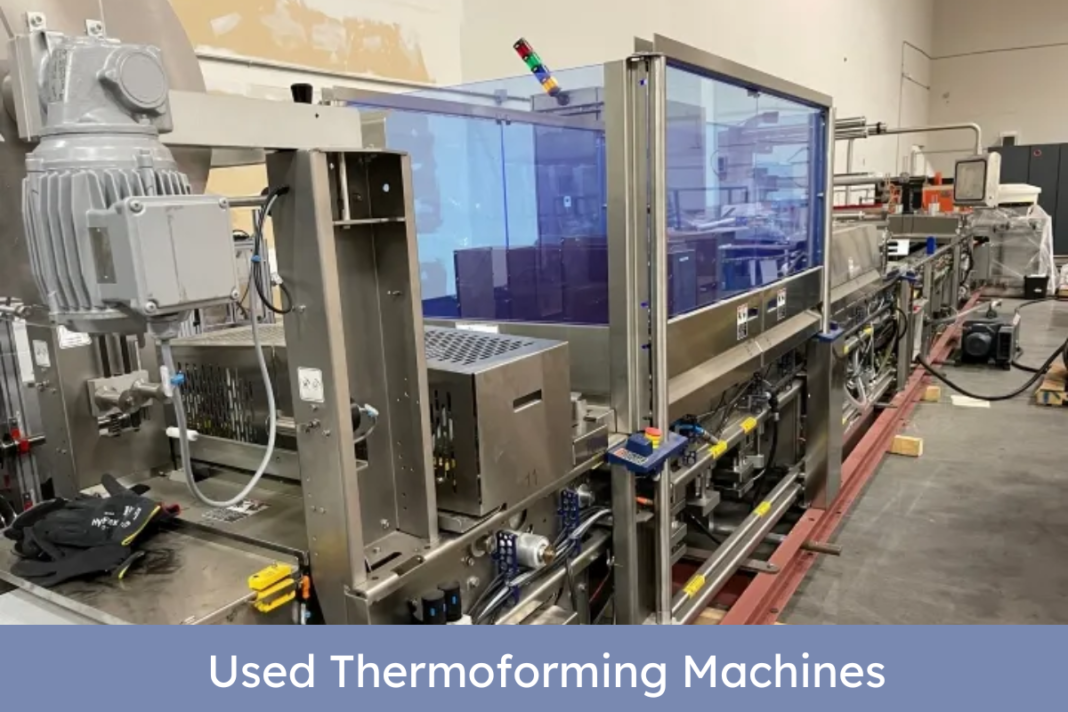In the manufacturing and packaging industries, efficiency plays a critical role in reducing costs and improving profitability. Thermoforming machines have become a valuable tool for businesses aiming to increase production speed, lower waste, and enhance product quality. These machines shape plastic sheets into a wide range of products—from packaging trays to automotive parts—with precision and speed. For companies considering an upgrade or looking to cut costs, Used Thermoforming Machines provide a practical, affordable solution without compromising efficiency.
This blog explores the ways thermoforming machines improve production efficiency and why businesses across various industries rely on them to streamline operations.
1. Faster Production Speeds
Thermoforming machines are known for their ability to produce large quantities of products quickly. With high-speed cycles, these machines ensure that businesses meet growing demands without delays. Unlike other manufacturing methods, thermoforming allows the production of complex shapes in just one step, reducing lead times and increasing output.
Advanced automation in modern thermoforming machines also minimizes manual intervention, which means manufacturers can focus on scaling operations efficiently. Even used thermoforming machines with updated components can deliver significant production speed, making them ideal for companies looking to boost output without heavy capital investments.
2. Flexibility in Material Usage
Thermoforming machines can process a variety of plastic materials, such as polyethylene (PE), polypropylene (PP), and polystyrene (PS). This versatility allows manufacturers to tailor their products to meet specific market needs, such as creating food-safe packaging, durable automotive parts, or lightweight medical trays.
The ability to switch between different materials quickly without downtime enhances production efficiency. Some machines are also designed to handle biodegradable plastics, helping companies align with sustainable practices while maintaining performance. Used thermoforming machines with multi-material capabilities offer the same flexibility at a fraction of the cost, further improving operational efficiency.
3. Automation and Reduced Labor Costs
Modern thermoforming machines come equipped with automated features, including robotic arms for material loading, cutting, and stacking. Automation reduces the need for extensive manual labor, minimizing human error and lowering labor costs. As machines handle repetitive tasks more accurately, the overall production process becomes faster and more efficient.
Additionally, automated thermoforming machines are readily available in the market, providing small and mid-sized manufacturers with access to advanced features without the expense of brand-new equipment. This helps businesses scale operations while keeping costs manageable.
4. Reduced Material Waste
Efficient production isn’t just about speed—it’s also about minimizing waste. Thermoforming machines use precise molds and advanced controls to ensure that materials are used effectively with minimal scrap. Some machines include vacuum and pressure features to shape plastic sheets into highly detailed products with minimal excess material.
Many modern thermoforming systems also come with in-line trimming, where the waste material from the trimming process is immediately recycled and fed back into production. Even used thermoforming machines often support these sustainable practices, helping businesses cut costs and reduce environmental impact without sacrificing quality.
5. Consistent Product Quality
Consistency is essential in manufacturing, especially when producing packaging or components that need to meet strict quality standards. Thermoforming machines ensure that each product maintains uniform dimensions and finishes by using precision molds and temperature controls.
The ability to maintain consistent quality across thousands of production cycles reduces the need for rework, saving both time and resources. This level of reliability is especially important in industries like food packaging and healthcare, where product quality directly affects safety and performance. With thermoforming machines, manufacturers can still achieve consistent output as long as the machines are well-maintained and calibrated.
6. Minimal Downtime with Easy Maintenance
Production efficiency also depends on minimizing downtime. Thermoforming machines are designed for easy maintenance, with features like modular components that allow for quick replacements and repairs. Regular maintenance schedules can keep these machines running smoothly for extended periods without significant disruptions.
Used thermoforming machines are often refurbished by sellers, ensuring they are in good working condition. These machines can provide excellent uptime when properly maintained, giving manufacturers a reliable solution without the long lead times associated with ordering new equipment.
7. Energy Efficiency Reduces Operating Costs
Another benefit of thermoforming machines is their energy-efficient design. Many modern machines use advanced heating systems that optimize energy consumption during production, reducing operational costs. Some machines also feature standby modes that lower energy usage during idle times, further enhancing efficiency.
Even used thermoforming machines can deliver energy-efficient performance if they have been well-maintained or retrofitted with newer components. By reducing energy consumption, businesses can lower their carbon footprint while keeping production costs under control.
Conclusion
Thermoforming machines play a vital role in improving production efficiency by increasing output, minimizing waste, reducing labor costs, and maintaining consistent product quality. Their flexibility to handle different materials and adapt to changing market demands makes them a valuable asset in industries like packaging, automotive, and healthcare.
For businesses seeking cost-effective solutions, Used Thermoforming Machines offer an excellent opportunity to benefit from advanced production capabilities without the expense of new equipment. Whether upgrading existing machinery or expanding operations, investing in thermoforming technology ensures businesses stay competitive, efficient, and prepared for future growth.
By incorporating automation, sustainable practices, and reliable maintenance, manufacturers can leverage thermoforming machines to meet production goals while reducing costs and environmental impact. As technology evolves, these machines will continue to play a central role in driving efficiency across various industries.







